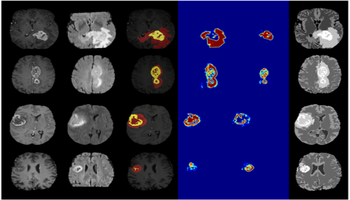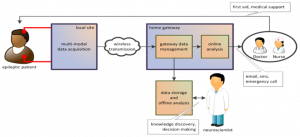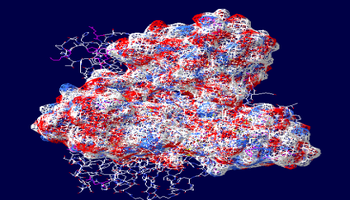1. Data Management Systems
 In addition to the design and development of databases we focus on providing extensions to existing DBMS technology to support the organization of complex data including the support of efficient storage and retrieval capabilities such as multidimensional indexing and content-based queries for multimedia. We investigate data compression issues and study how properties/characteristics of data can be used to improve their management. We also focus on providing extensions to geographic information systems (GIS) and enhance their analytical capabilities. Other areas of interest include development of data management tools for streaming data (DSMS), taking into account computational cost constraints, while highlighting further requirements such as data summarization and caching, in order to serve rapid transaction requests. A recent research focus includes NoSQL databases.
In addition to the design and development of databases we focus on providing extensions to existing DBMS technology to support the organization of complex data including the support of efficient storage and retrieval capabilities such as multidimensional indexing and content-based queries for multimedia. We investigate data compression issues and study how properties/characteristics of data can be used to improve their management. We also focus on providing extensions to geographic information systems (GIS) and enhance their analytical capabilities. Other areas of interest include development of data management tools for streaming data (DSMS), taking into account computational cost constraints, while highlighting further requirements such as data summarization and caching, in order to serve rapid transaction requests. A recent research focus includes NoSQL databases.
2. Biomedical Data Analysis
2.1 Biomedical Image Analysis
 Our focus on Biomedical Image Analysis is on the development of computer-based approaches and decision-support tools applicable to clinical practice. In our lab, image analysis methodologies focus on medical image segmentation and registration, high dimensional feature extraction and pattern classification, texture, tree structure and morphological variability analysis. Clinical research studies span a variety of clinical areas, such as brain tumors, brain lesions or breast cancer. Brain and breast imaging modalities for which we have expertise analyzing data from include: conventional Magnetic Resonance Imaging (MRI), Computerized Tomography (CT), functional MRI (fMRI), ultrasound (US), digital subtraction angiography (DSA), galactography and mammography. These modalities are commonly utilized in clinical practice and provide noninvasive images of anatomy and function of living tissues.
Our focus on Biomedical Image Analysis is on the development of computer-based approaches and decision-support tools applicable to clinical practice. In our lab, image analysis methodologies focus on medical image segmentation and registration, high dimensional feature extraction and pattern classification, texture, tree structure and morphological variability analysis. Clinical research studies span a variety of clinical areas, such as brain tumors, brain lesions or breast cancer. Brain and breast imaging modalities for which we have expertise analyzing data from include: conventional Magnetic Resonance Imaging (MRI), Computerized Tomography (CT), functional MRI (fMRI), ultrasound (US), digital subtraction angiography (DSA), galactography and mammography. These modalities are commonly utilized in clinical practice and provide noninvasive images of anatomy and function of living tissues.
2.2 Health informatics and data analytics
 The health informatics and data analytics group aims to apply new data management, knowledge discovery and data mining technologies in complicated multi-dimensional, multi-scale, multi-modal health data to develop effective decision support systems that improve health care. Our group, recognizing human beings as the ultimate users of biomedical information, focuses on bridging the gap between clinical research and practice; thus, we develop effective health data management systems for the storage, retrieval, usage and sharing of biomedical knowledge.
The health informatics and data analytics group aims to apply new data management, knowledge discovery and data mining technologies in complicated multi-dimensional, multi-scale, multi-modal health data to develop effective decision support systems that improve health care. Our group, recognizing human beings as the ultimate users of biomedical information, focuses on bridging the gap between clinical research and practice; thus, we develop effective health data management systems for the storage, retrieval, usage and sharing of biomedical knowledge.
3 Bioinformatics
 Our work in bioinformatics is centered around two main axis: analysis of gene expression maps and analysis of protein molecular surfaces. Voxelation is a relatively new method for obtaining gene expression patterns in the brain. It employs high-throughput analysis of spatially registered voxels to produce 3-D maps of gene expression. Gene expression in the mammalian brain holds the key for understanding neural development and neurological disease. Our lab has done extensive work on large scale data analysis for identifying the relation between gene expression maps obtained by voxelation and gene functions. Moreover, in the areas of drug design, pharmacology and 3D molecular modeling and in order to speed up the drug discovery process, considering the rapid increase in genomic and structural database sizes, we are developing novel strategies to perform effective and efficient similarity searches and molecular docking experiments using protein molecular surfaces.
Our work in bioinformatics is centered around two main axis: analysis of gene expression maps and analysis of protein molecular surfaces. Voxelation is a relatively new method for obtaining gene expression patterns in the brain. It employs high-throughput analysis of spatially registered voxels to produce 3-D maps of gene expression. Gene expression in the mammalian brain holds the key for understanding neural development and neurological disease. Our lab has done extensive work on large scale data analysis for identifying the relation between gene expression maps obtained by voxelation and gene functions. Moreover, in the areas of drug design, pharmacology and 3D molecular modeling and in order to speed up the drug discovery process, considering the rapid increase in genomic and structural database sizes, we are developing novel strategies to perform effective and efficient similarity searches and molecular docking experiments using protein molecular surfaces.
4. Big Data pattern analysis and modeling
 The large amount of digital information in society is inherently connected to advances in technology, the WWW, the rise of smart phones, cloud services, the Internet of Things. This big data phenomenon is unstructured and transient. Motivated by this reality, the Big Data pattern analysis and modeling group aims at converting raw data into valuable knowledge by uncovering hidden patterns and unknown correlations in order to stimulate scientific discoveries and optimize processes within the society through the understanding of social and collective behavior. Our research, applied to a broad range of applications, spans from data management and advanced data analysis to service platforms. More specifically, our research interests include:
The large amount of digital information in society is inherently connected to advances in technology, the WWW, the rise of smart phones, cloud services, the Internet of Things. This big data phenomenon is unstructured and transient. Motivated by this reality, the Big Data pattern analysis and modeling group aims at converting raw data into valuable knowledge by uncovering hidden patterns and unknown correlations in order to stimulate scientific discoveries and optimize processes within the society through the understanding of social and collective behavior. Our research, applied to a broad range of applications, spans from data management and advanced data analysis to service platforms. More specifically, our research interests include:
- Multi-dimensional data analysis (preprocessing, feature extraction, dimensionality reduction, knowledge discovery)
- Spatial, temporal (including multi-dimensional time series), spatio-temporal data mining
- Computational frameworks and modeling (data driven, statistical, probabilistic, graph (time-evolving and static))
- Data representation, integration, fusion and high-order analysis
- Data compression
- Streaming data analysis and decision making
- Applications of interest: energy management, economics, environment, human activity, social behavior, seismology, neuroinformatics.
5. Natural language processing
 The NLP group of the MDAKM laboratory of the University of Patras, constitutes an integrated research environment for the design and development of language technology products and solutions. In continuous interaction with the academic community, the national and European informatics industry, the international scientific community and the public sector, NLP group has evolved to an internationally renowned institution in Computer Science and Technology. NLP group is involved in both theoretical and applied research in the general field of databases, natural language processing and information retrieval, pattern recognition and software engineering. The NLP group has the expertise for carrying out large scale IT projects and collaborates with senior researchers who are capable of conducting cutting edge research in the fields of Natural Language Processing, Very large Databases and Hypermedia.
The NLP group of the MDAKM laboratory of the University of Patras, constitutes an integrated research environment for the design and development of language technology products and solutions. In continuous interaction with the academic community, the national and European informatics industry, the international scientific community and the public sector, NLP group has evolved to an internationally renowned institution in Computer Science and Technology. NLP group is involved in both theoretical and applied research in the general field of databases, natural language processing and information retrieval, pattern recognition and software engineering. The NLP group has the expertise for carrying out large scale IT projects and collaborates with senior researchers who are capable of conducting cutting edge research in the fields of Natural Language Processing, Very large Databases and Hypermedia.

